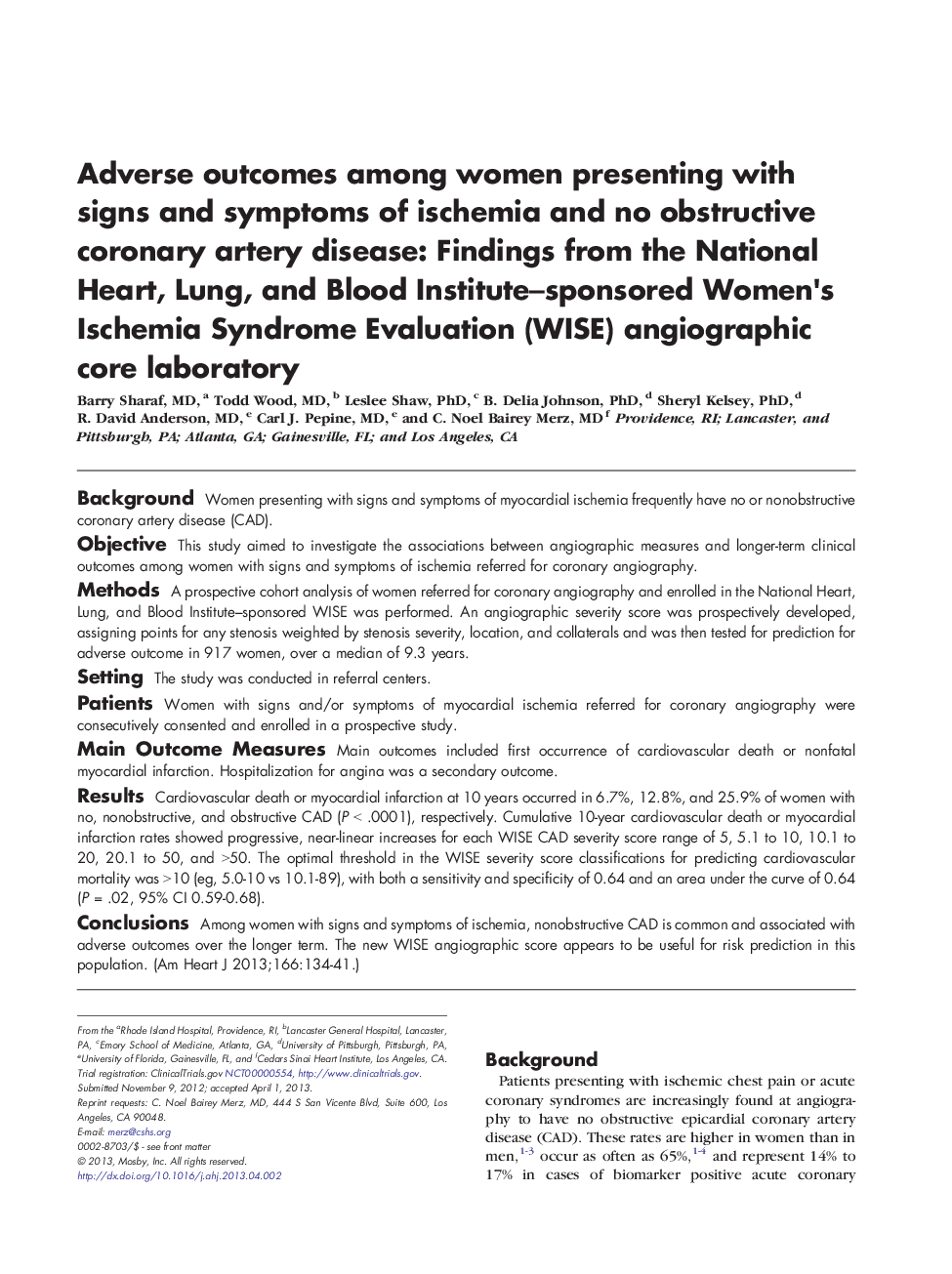| Article ID | Journal | Published Year | Pages | File Type |
|---|---|---|---|---|
| 2848830 | American Heart Journal | 2013 | 8 Pages |
BackgroundWomen presenting with signs and symptoms of myocardial ischemia frequently have no or nonobstructive coronary artery disease (CAD).ObjectiveThis study aimed to investigate the associations between angiographic measures and longer-term clinical outcomes among women with signs and symptoms of ischemia referred for coronary angiography.MethodsA prospective cohort analysis of women referred for coronary angiography and enrolled in the National Heart, Lung, and Blood Institute–sponsored WISE was performed. An angiographic severity score was prospectively developed, assigning points for any stenosis weighted by stenosis severity, location, and collaterals and was then tested for prediction for adverse outcome in 917 women, over a median of 9.3 years.SettingThe study was conducted in referral centers.PatientsWomen with signs and/or symptoms of myocardial ischemia referred for coronary angiography were consecutively consented and enrolled in a prospective study.Main Outcome MeasuresMain outcomes included first occurrence of cardiovascular death or nonfatal myocardial infarction. Hospitalization for angina was a secondary outcome.ResultsCardiovascular death or myocardial infarction at 10 years occurred in 6.7%, 12.8%, and 25.9% of women with no, nonobstructive, and obstructive CAD (P < .0001), respectively. Cumulative 10-year cardiovascular death or myocardial infarction rates showed progressive, near-linear increases for each WISE CAD severity score range of 5, 5.1 to 10, 10.1 to 20, 20.1 to 50, and >50. The optimal threshold in the WISE severity score classifications for predicting cardiovascular mortality was >10 (eg, 5.0-10 vs 10.1-89), with both a sensitivity and specificity of 0.64 and an area under the curve of 0.64 (P = .02, 95% CI 0.59-0.68).ConclusionsAmong women with signs and symptoms of ischemia, nonobstructive CAD is common and associated with adverse outcomes over the longer term. The new WISE angiographic score appears to be useful for risk prediction in this population.
